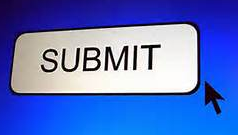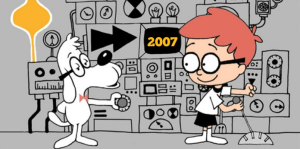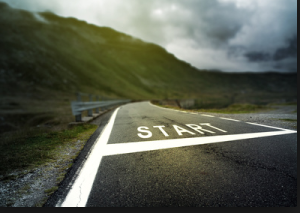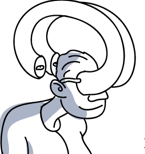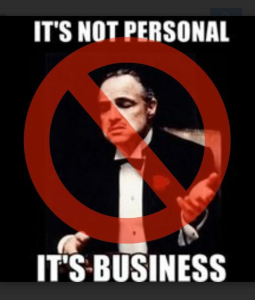Happy New Year folks, and welcome to The Stand 2015.
When I kicked off this blog about five months ago, I honestly had no idea what to expect. Would anybody see it? Would anyone care? At the time, that really wasn’t the most important thing to me. I just knew that I had to get the information out there, though frankly, I didn’t have a clue where “there” was.
But I knew that people needed to know this stuff, so I launched thestandrecovery.com. I simply wanted to equip anyone seeking the truth about addiction with the facts they needed to get a better understanding what they were dealing with; for them to begin making some sense of what I know can feel like a totally senseless situation. I wanted to help people sort through the garbage that’s said about addiction, and to pick up enough worthwhile information to give them the courage to start asking the questions they hadn’t even known to ask.
I just remember how liberating and empowering it felt when I finally gained enough confidence to stop blindly accepting everything the addiction experts said. It began with learning the basics of what actually was driving the bizarre behavior that had us caught in its chaotic wake.
If nothing else, I wanted to offer people the one tool that might begin to break the grip of fear and helplessness that held them: the basic knowledge of what is known about the brain, addiction and its treatment, and what is not. My hope was that even a beginning grasp of the truth – just the facts – might bring them a first glimpse of hope.
It was with this simple goal that I created The Stand blog, and after seven years of investigation and research, I determined it was time to step out of the shadows and take a stand against the false narrative that shaped much of what we are taught about addiction and its treatment.
And then the most amazing thing happened. I started hearing back from you – thank you by the way – saying you wanted to know more. So that’s the plan.
I’ll be doing my best to keep you current with the latest technology and research dealing with addictions of all sorts and their related brain and behavior issues. I’ll pass along updates about anything new in addiction treatment and prevention efforts, and what if anything, we’re seeing as a result. I want to talk with you about the whole marijuana legalization movement – both the pros and cons – and how we might want to prepare for when it comes our way
And there are some things that I hadn’t intended to do that now seem appropriate, even necessary. More on that in a bit.
But before moving on, I want to thank you again for visiting The Stand and for your encouragement. I hadn’t expected it. Please stop by regularly, offer your thoughts, and share anything you think we should know about or check into. My hope is that as we settle in, we can start talking together and exchange ideas about the issues we’re all facing and what we actually can begin doing about them.
So here we are, just 14 days into the New Year, and we’ve already lost 6,436 people in the United States to drugs and alcohol[i].
Actually, the number just grew by 3 more souls as I wrote that sentence. I still feel sick to my stomach when I think back to how close we came to our daughter being counted as another statistic. It’s a stark reminder of how many others still remain at risk.
On that happy note, I thought a good start for The Stand 2015, would be to tell you a bit about what I call the awakening journey that I’ve been on these past seven years. When most of what I’d thought about the brain and addiction was shattered and how, with helpful advisors and access to data, I uncovered a great deal of what’s really known about the addicted brain and what’s simply not. It was when I came to know that God is the key to understanding what science is revealing about the brain and addiction. And it was when I knew for certain that this is the time we must stand for the truth about addiction and the promise of finding the way out.
It was in late 2007, that I first set out on this quest to find a better way to battle addiction.
I knew going in, that no matter what I found, there would be push-back and criticism. After all, anytime someone challenges the status quo or simply introduces new ideas, they have to be ready for opposition. And the critics did not disappoint.
In the early years, my work focused on contradictions between the findings in brain science and current treatment methods, particularly when addressing younger people and matters of the still-developing brain. I had the opportunity to discuss issues about addiction policy, science and treatment with many extraordinary people who came from a mix of science, academic, medical, treatment, judicial, policy, regulatory, and advocacy fields. Some of these folks were persuaded to change their thinking or at least consider new possibilities, while others listened and exchanged ideas, but candidly explained they weren’t ready for dramatic change.
Although our discussions often ventured into controversial and difficult matters,  and though we would disagree and debate, the dialogue remained all about the work, what we’d learned and where it might lead. We kept it professional, didn’t let things get personal.
and though we would disagree and debate, the dialogue remained all about the work, what we’d learned and where it might lead. We kept it professional, didn’t let things get personal.
Through hundreds of such exchanges, I gained valuable information and insight, came to appreciate the complexity of addiction itself, and of the massive industry built around it. I’ve also grown to recognize what’s at stake for industry leaders, and how in poking holes in the industry’s underlying positions, we place their careers and reputations at risk, with repercussions possibly extending to the million-plus jobs the industry provides, and the thousands more that it feeds through its supply of grants, contracts, programs and more.
But during the same period, I also met with hundreds of people who have felt the pain of addiction, both directly and indirectly. I’ve become acutely aware of all that’s at stake for the people struggling with addiction, their families and communities. I’ve shared their heartbreak over the millions of lives being wasted, and the thousands being lost, all while the massive industry sworn to serve them goes about its business, gathering data, issuing reports and considering possibilities, while sustaining itself and holding fast to its fixed course.
My work led me to uncover outdated, flimsy, and even discredited evidence that continues to drive much of today’s addiction policy, education, and treatment, while exciting new findings remain unaddre ssed. It revealed how much of the industry’s resistance to change seems to come from a fierce emotional attachment to the precepts passed down from industry pioneers, and to the fundamental beliefs and lifestyle that are at the core of their treatment method itself.
ssed. It revealed how much of the industry’s resistance to change seems to come from a fierce emotional attachment to the precepts passed down from industry pioneers, and to the fundamental beliefs and lifestyle that are at the core of their treatment method itself.
After going many rounds with industry leaders and with those working in the trenches, regarding the huge disconnect between research findings and the current teaching and treatment strategies, it became clear that all the evidence and reasoning in the world was unlikely to move much of the industry from its thoroughly ingrained position.
Although the industry’s own research suggests otherwise[ii], those directing the message continue to teach that addiction is the function of a mesolimbic dopamine system dysregulation (impairment) leading those affected to substance abuse and addiction, a chronic disease or condition that cannot be overcome but must be managed daily for life.
And though their own data consistently reports that the principle treatment program fails in its efforts to manage addiction,  they continue to teach its message and method.
they continue to teach its message and method.
As remarkable as it was to repeatedly run into this immovable wall, what struck me most was that so many of those defending the entrenched position privately acknowledged the huge discrepancies between what has been proved and what they taught. But for reasons of their own, they remained committed to the script they knew.
This no longer was just about research and information. What was being taught affected people who had trusted they were being told the truth. The discussion seemed far less professional. It was beginning to get personal.
What was I missing?
Though the evidence was mounting against the current industry position, I couldn’t get past the possibility that I’d somehow overlooked critical data that verified their stance. Or was it possible that I’d misunderstood or even ignored it. (Always a possibility)
So, recognizing that my top-line understanding of the brain and related disciplines was no match for the experts who continued to endorse established industry views, and being ever mindful that I am not a brain scientist, I stepped back and devoted a couple more years to becoming better informed.
For those of you who have asked about the basis of the thinking and ideas shaping The Stand, or simply are curious to know, the following have been the most influential areas of study. (And for those who don’t really care, I’ll make it brief.)
For starters, I had to go back and get a much better grasp of the brain basics. From there, I dug deeper into the more recent research in neurobiology, examining in greater detail how the brain develops, how it keeps growing and changing well into our older age, how it adapts after traumatic injury, and how self-repairing mechanisms function. I found that I had a lot to learn about cell structure and the operation and purpose of different types of neurotransmitters, and invested the necessary time there.
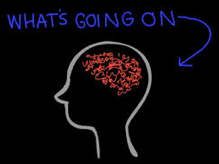 It was exciting to explore the complete picture of how all the parts knit together to perform the unconscious and conscious functions that define our amazing brain. Perhaps the most pivotal insight came from learning how neural communication networks extend across, through and among brain regions, influencing cognitive processes in ways never imagined; from understanding how input from throughout the brain converges in the executive region, where our faith and character can weigh in and affect judgments, behavior and learning; and in finding how the brain can “work around” failed connections or areas that haven’t fully or properly developed to allow uninterrupted communication.
It was exciting to explore the complete picture of how all the parts knit together to perform the unconscious and conscious functions that define our amazing brain. Perhaps the most pivotal insight came from learning how neural communication networks extend across, through and among brain regions, influencing cognitive processes in ways never imagined; from understanding how input from throughout the brain converges in the executive region, where our faith and character can weigh in and affect judgments, behavior and learning; and in finding how the brain can “work around” failed connections or areas that haven’t fully or properly developed to allow uninterrupted communication.
Some of the most useful information came from new work being done in genetics, game theory, learning and decision-making science, as well as in neuroeconomics, all of which are exploding with new information that’s revealing breakthrough possibilities for helping people change how they choose to think and behave. And thankfully, I had a bit of time to look into the growing area of neuroethics, which reminds us of the potential for the new knowledge about the brain to be misused, and our need to guard against that happening.
Throughout these added years of study, I came upon case after case, in which researchers disagreed over the meaning and value of new evidence. And I could see how there could be so much confusion and contradiction in what is said about the brain, especially when the work addresses issues about mental conditions, where there’s so little objective data.
It became easy to see how even experienced research scientists might fall into what’s called confirmation bias, where they select and interpret information in such as way as to confirm their going in beliefs or hypotheses. (Nah – who would do that?) While this in itself can be harmful when the skewed findings are presented, published, and accepted as good science, the still greater risk comes when subsequent work by the author or by others endorsing the views, use the published findings as a stepping off point for further study, thus giving it added legitimacy and extending the bias still further.
Especially when the issue being studied is more emotional, such as with addiction, the tendency can be for researchers to slip into what’s called belief perseverance, where they dig in and defend their biased position even when new evidence shows it to be false. And in extreme cases, we can see something referred to as illusory correlation, when the researchers go so far as to actually develop false correlations as a way of bolstering their views. The simple fact that these bias tendencies have their own names is a real give-away that they are rather frequent occurrences.
I bring this up because, as I traced the milestones in addiction science, policy and treatment, from today, back to the early 1900’s when the chronic disease model of addiction was introduced, and lined that up with the same period timelines of neuroscience, imaging and other research technology, behavior science and psychology, the picture could have served as the prototype model explaining the progressive stages of confirmation bias. 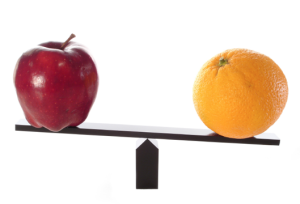 Even to the point that research scientists came to explain their addiction model by correlating it with the chronic disease model of diabetes[iii].
Even to the point that research scientists came to explain their addiction model by correlating it with the chronic disease model of diabetes[iii].
Boy, I sure took the long way to get to a simple point. But I think it’s important for a few reasons. It tells me we’re probably not dealing with some conspiracy to deliberately mislead the public and preserve an institution. It also explains why it’s unlikely we’ll see the industry come off its position, regardless the amount of evidence presented to disprove it. And it forces us to acknowledge the emotional component of anything dealing with addiction, and how that affects the objectivity and motivation of anyone addressing addiction issues at any level.
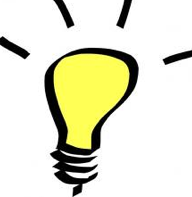 And that’s when it hit me. In all of our well-meaning efforts to keep our discussion all business-like and professional, never letting the dialogue get personal so not to offend or discourage anyone, we effectively sanitized a very messy, distasteful, and in many cases highly personal, matter into something people could feel comfortable talking about.
And that’s when it hit me. In all of our well-meaning efforts to keep our discussion all business-like and professional, never letting the dialogue get personal so not to offend or discourage anyone, we effectively sanitized a very messy, distasteful, and in many cases highly personal, matter into something people could feel comfortable talking about.
And as we discussed the latest findings from cutting edge technology, the meaning of vivid brain imaging pictures, and various topics to address at the next addiction summit, I think we sometimes lost sight of the fact this whole addiction challenge isn’t about business, its about people. And they are dying.
The unavoidable fact is that while our conversations might have remained at a professional level, the issues surrounding addiction never stopped being personal. In the end, the practiced veneer of objectivity masked the entrenched biases. And the assertion of proof and certainty of existing beliefs, discouraged efforts to pioneer new theories about addiction and channeled attempts at innovation to sustain established practices.
I find it ironic that in a field where “enablers” are called out and charged with allowing a loved one’s addiction grow worse, we who worked to preserve a polished and businesslike tone in the discussion about addiction, might prove to be the worst enablers of all – by allowing the false narrative about addiction to go unchallenged and be strengthened.
Now I confess, I’m one who is uncomfortable when a conversation  turns personal. For me, personal is private, and I like to keep it that way. Well guess what? That just isn’t going to cut it any more if we actually want to bring in new and better ways to take on addiction.
turns personal. For me, personal is private, and I like to keep it that way. Well guess what? That just isn’t going to cut it any more if we actually want to bring in new and better ways to take on addiction.
I’ve had to face the fact that it’s generally when things get really personal, that people are willing to move beyond merely saying what they stand for, to actually finding the courage to stand up, to dare to tell the truth and be willing to take what comes as a result. And I think that for people to find the courage to stand and be counted for what they believe, they must feel it is more than worth the personal risk.
And that’s where we are, entering 2015 with The Stand.
What was the turning point?
I confess, it took a real smack in the face to move me out of my comfy place of sharing facts and figures from the safety of my computer. And it came in the form of an RFP, or request for proposal, to explore innovative new forms of addiction treatment that target the brain. A quick search revealed that the proposal was sponsored by the research and development arm of the Defense Department – DARPA, Defense Advanced Research Projects Agency, and that some new ideas already were in some level of test.
I had been reading in some of the brain science journals that more invasive forms of treatment were being considered for diagnosable diseases and conditions with severe negative impact on those affected. And though I imagined the potential down-road implications for addressing addiction, given that we still couldn’t objectively detect or even define addiction, how could be at the point of considering invasive brain procedures to treat its symptoms?  Whoa Nellie! Did I hear someone say high-tech lobotomy?
Whoa Nellie! Did I hear someone say high-tech lobotomy?
And as I continued to read, I realized that I was standing.
I hope you come back later this week as Stand Up! Make It Personal continues, introducing, The Next Generation of Addiction Treatment?
[i] http://www.romans322.com/daily-death-rate-statistics.php
[ii] See Brain Science, Like It’s Hard? Parts 1 & 2.
[iii] http://www.williamwhitepapers.com/pr/2008WhiteMcLellanChronicDiseasePaper.pdf S DRUG DEPENDENCE A CHRONIC MEDICAL ILLNESS: Implications for Treatment, Insurance and Outcome Evaluation http://www.lhc.ca.gov/lhc/drug/McClellanApr25.pdf
